Royal Fort (built 1556-1839) Pakistan
The fort at Lahore is the result of many centuries' work. According to the Pakistani historian Wali Ullah Khan, the earliest reference to the fort comes in a history of Lahur (Lahore) compiled by Al-Biruni, which refers to a fort constructed in the early 11th century. He further notes that Munshi Sujan Rae Bhandari, author of the Khulasatut Tawarikh in 1695-96 A.D., records that Malik Ayaz, a favorite of Sultan Mahmud, built a masonry fort at Lahore and repopulated the city. Khan believes it is the same fort that was damaged by the Mongols in 1241 and again in 1398 by a detachment of Timur's army, then rebuilt again in 1421 by Sayyid, son of Khizr Khan.
The early history of the fort is subject to debate, but it is known for certain that the fort was extensively upgraded during the reign of Emperor Akbar (mid-16th century). Sometime before 1566, the mud-brick fort was demolished and replaced with burnt bricks. The exact date is not known for certain since the records first refer to a fort at Lahore in connection with the rebellion of Muhammad Hakim in 1566.
The fort was greatly expanded during the reigns of Jahangir, Shah Jahan, and Aurangzeb. During the period of Sikh occupation, Ranjit Singh added several pavilions on the upper ramparts. Modifications to the fort were even made during the British colonial period beginning in 1846, but consisted mainly of converting older buildings into hospitals, barracks, and other colonial functions. Perhaps worst of all, portions of the gardens were converted into tennis courts, but abuses such as this have been corrected as Pakistani preservationists have restored the fort to its pre-1846 appearance.
Certain major buildings:
The Masti gate (a corruption of Masjid gate) is named after the mosque which still stands outside the gate. Built in 1566, the gate only assumed its present name after the construction of the nearby mosque in 1641 by Empress Maryam Zamani, the mother of Jahangir. (The Masti gate is shown in images 1 and 2).
The Diwan-e-'am (Hall of Public Audiance) was constructed in 1631-32 A.D. after Shah Jahan, in the first year of his reign (1628), ordered that the temporary pavilion used to shelter nobles at court be replaced by a "hall of forty pillars." It is located at the center of the fort and measures 187' x 60' wide and 34' tall. The building is heavily restored as it was almost destroyed by gunfire during the precolonial period during fighting between various factions. It was rebuilt (rather shabbily) by the British during the first part of the occupation period.
Moti Masjid was built in the Shah Jahan era about 1645 A.D., and is the earliest Mughal mosque in the fort. It is one of three "Moti" or Pearl Mosques built in the Mughal period, the others being the one at Agra Fort (also on this webpage) and another at Delhi built by Aurangzeb. The Moti Masjid was used as a treasury during the Sikh period. (images 18-23).
The Lal Burj, an octagonal tower, was constructed from 1617-31 A.D. Intended as a summer pavilion, it is decorated on the outside with mosaic and filigree while the interior is filled with paintings from the Sikh period. The lower two stories were built during Jahangir and Shah Jahan's reign, while the upper story is a Sikh addition. (images 12-13)
 |
| A view of the front of the Sheesh Mahal |
The Bungla, popularly called the Naulakha pavilion "edifice which costs nine lakhs", is a unique marble pavilion with a curved roof. It was constructed during Shah Jahan's reign in 1631-32 A.D. for the Empress when she resided at Lahore. It is often considered one of the finest buildings in Pakistan. (Images 3-4, and a rear view in image 15).
The Shish Mahal is a multi-storied structure north of the Bungla. It is also part of the royal residence constructed by Shah Jahan in 1631-1632.
Photo Gallery And Snapshots Of the Lahore Fort Pakistan
 |
| Alamgiri Gate in front of the fort |
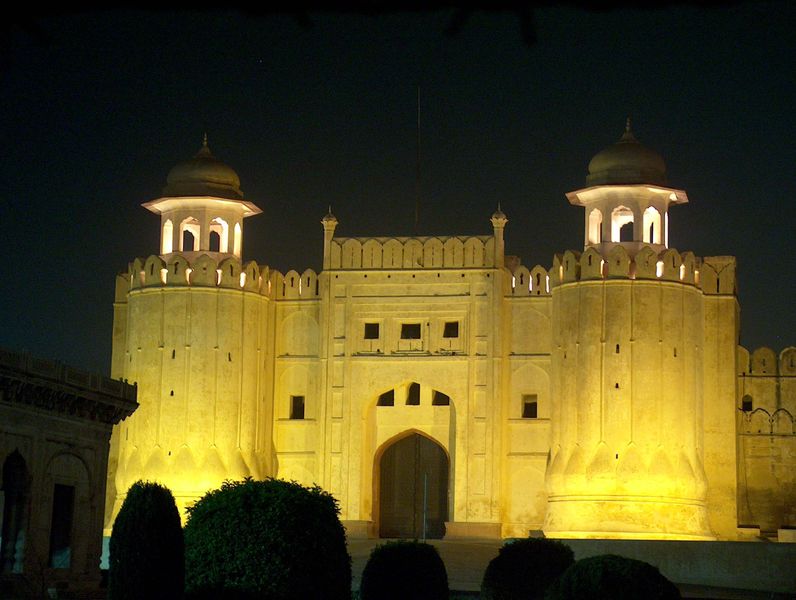 |
| Lahore Fort at night-time |
 |
| Old 'Khangah' inside Fort |
 |
| Naulakha Pavilion |
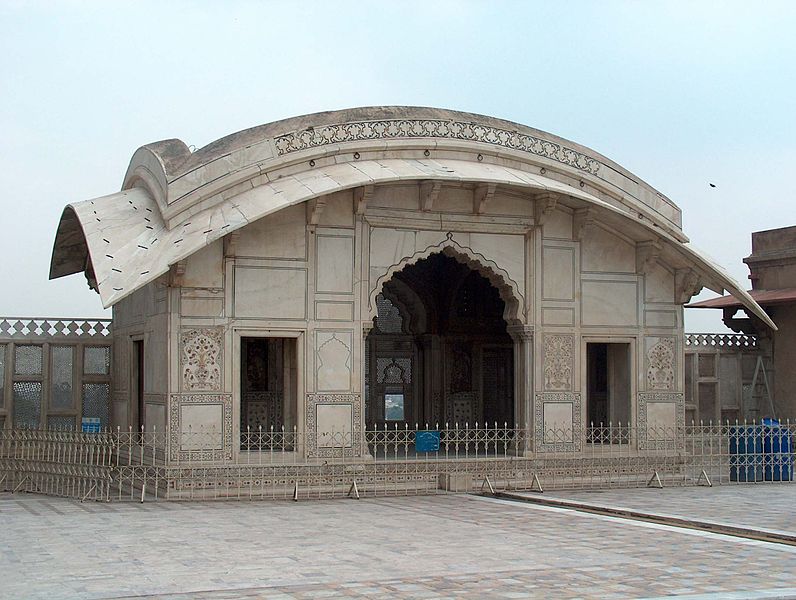 |
| Close View of the Naulakha Pavilion |
 |
| Naulakha Detail |
 |
Moti Masjid |
 |
Moti Masjid Interier |
 |
Gateway Ramparts |
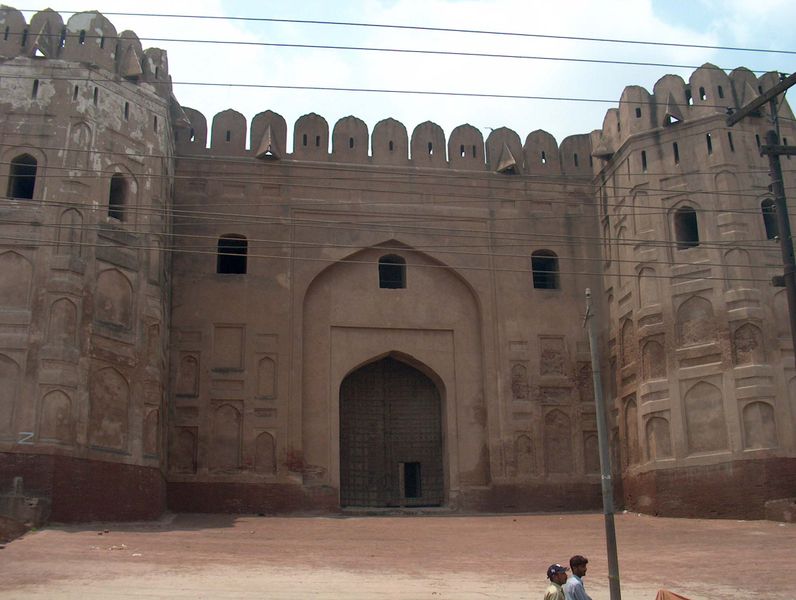 |
The Lahore Fort-A gate from the backside |
 |
Lahore Fort Hathee Peyr |
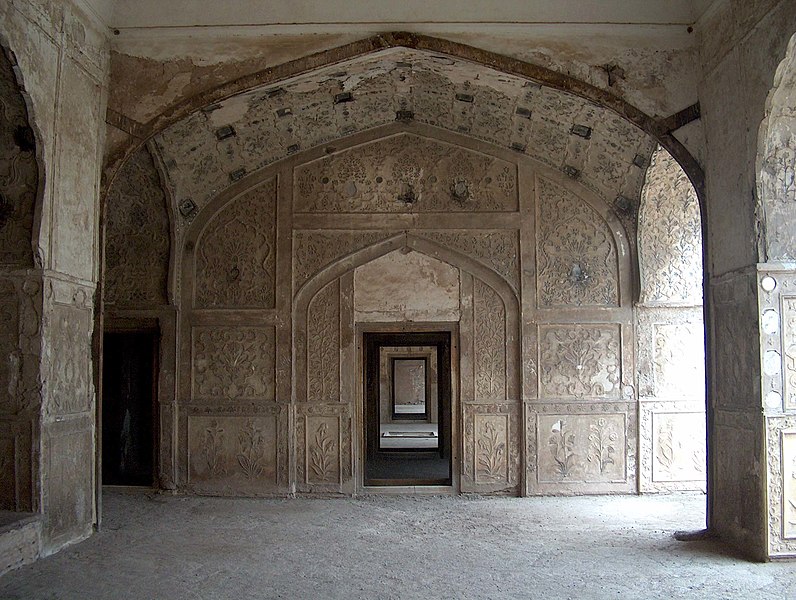 |
The Lahore Fort-Doorways of sleeping chambers |
 |
The Lahore Fort-Closer view of the Hall of public audience |
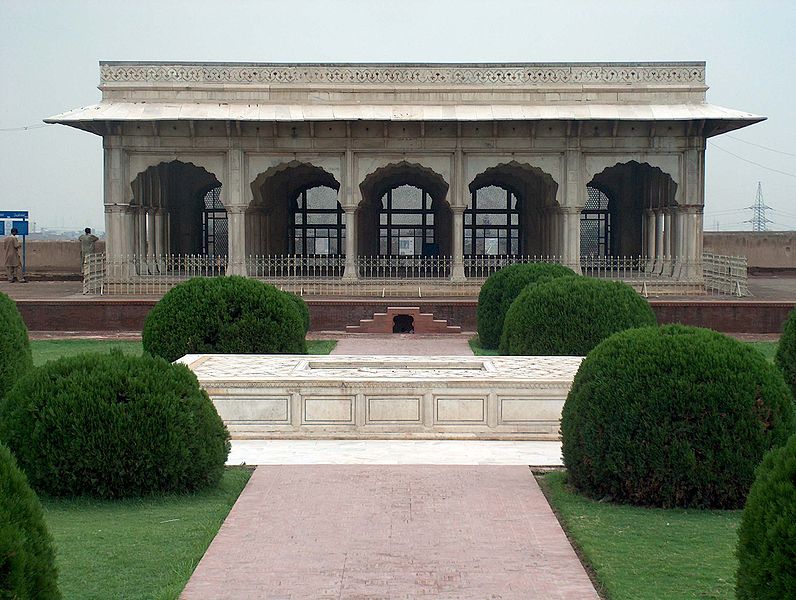 |
The Lahore Fort-Front center view of hall of special audience |
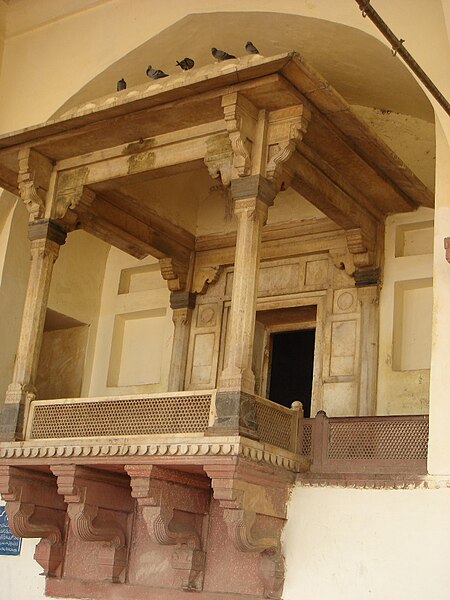 |
Jharoka Diwan-i-Aam |
 |
The Lahore Fort-A black wooden door |
 |
Pakistan's Pavillion at the 2010 World Expo in Shanghai |




















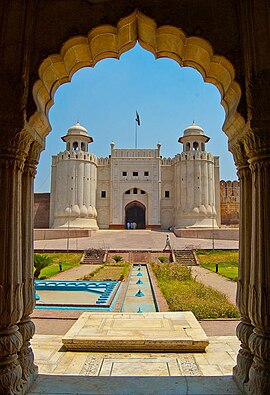

 Posted in:
Posted in: 



